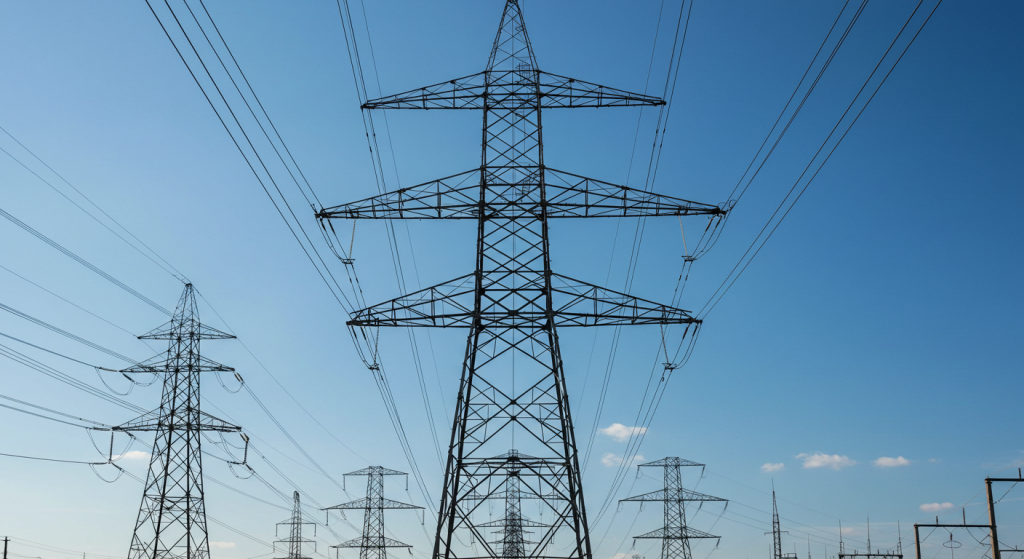Transmission System Towers: Understanding Their Importance
2025-04-26
What are Transmission System Towers?
The pylons, or Transmission system towers, are devices that carry overhead electric lines. These structures fetch electricity from plants and smartly channel it into related substations. In other words, they transmit high-voltage electricity to substations from power-generating stations. These structures, along with power plants, constitute the electrical infrastructure. What is quite remarkable is their enduring hostility to weather, ground shifts, and other mechanical forces while awkwardly clearing the ground, roads, and everything else.
Importance of Transmission System Towers
Here, the use of lines tower serve distinct purposes, whereas in the case of electricity delivery would be primitive and diffused to select regions only. The tower serves to accomplish the following aims:
- Desired height above ground and wires clearance.
- Minimized power loss
- Sturdier fence against electric surges
- Reinforced substation electric frameworks
All of these, for organic power areas, would prove to be advantages.
Important Aspects of Transmission Towers
Every transmission system Towers contains the following parts:
Separate Functions
- Cross-Arms Support: These are responsible for bearing the weight of the conductors.
- Insulators: Protect the tower structure from live wires
- Conductor Wires: Transmit Electric energy
- Ground Wires: Lightning arrest guard wires.
- Tower Body: Vertical support bearing structure.
- Base/ Legs: The foundation that bears the weight.
To learn more about bolt-on power systems infrastructure, visit our site.
Art and Design Combined in One: Transmission Tower Design
Steel and bolts are not the only parts that make up a high-voltage transmission tower. The design of a tower involves analysis and precision. Some of the most important parameters are:
- Tower Height: Ranges from 15m to 55m depending on the terrain's voltage level.
- Base Width: There’s a limitation in considering wind load and the other type of foundation topology.
- Cross Arm Length: Spacing on conductors and insulator strings, and spacing created on extension over opposing arms.
- Conductor Sag: Requires to be pre-tweaked for not to touch an object.
- Wind Load & Seismic Design: External forces give us loads, which are made to be encaged with Finite Element Analysis (FEA).
Maintaining a System Tower
For the sustaining power, maintenance, and evaluation of the tower's functional structural integrity of the whole tower in the transmission system is vastly important. This component suffers from environmental and mechanical fatigue, corrosion, and electric fatigue in the long run.
Importance of Tower Maintenance
Continuing to not perform maintenance, there are a lot of costly repairs, increased outages, dubious power outages, and expensive outages to the power grid. Regular maintenance is a vital grid for safety standards compliance and enhances longevity.
Routine Inspection Procedures
Routine inspection procedures for the Tower include:
• Check for signs of corrosion or damage on any bolt, joint, or steel part.
• Inspect insulators for fractures alongside signs of contamination.
• Check conductors for minor bends, tautness, and full corrosion.
• Check bases for soil erosion and settlement.
Inspection Techniques
Modern Methods include:
• Aerial Drone View Inspections
• Climbing Inspections
• Overheating component: Thermal Imaging

Scheduled vs. Emergency Maintenance
Scheduled Maintenance refers to regularly pre-planned activities, while Emergency Maintenance refers to unplanned maintenance activities stemming from storms, accidents, or overloaded systems.
Partner with Experts
Our Business Consultants provide consultations related to the inspection, repair, and grid safety assessment of transmission towers. The work of maintenance planning and execution of the towers is aligned with and aimed at the performance of the transmission grid to ensure reliability and operational efficiency of the electrical grid, providing power to cities, industries, and homes.
Installation Process: From Ground to Grid
The construction of the tower encompasses mechanized civil and electrical work. This includes:
Survey and Route Planning
The survey prepares the contour of the region to be covered and determines the most optimal route.
Foundation Construction
A construction site will be selected after conducting thorough soil tests, geophysical surveys, and determining the approximate vertical load. Such studies are expected to determine:
Tower Erection
Cranes or gin poles may be employed. In some remote locations, helicopters may be utilized.
Conductor Stringing
This remains one of the most sensitive operations set with tensioned winches for setting vertical clearance and observing the required vertical clearance.
Testing and Commissioning
Obligatory checks are carried out on effective grounding and electrical clearances, and all verification checks are done.
Regular Maintenance and Tower Inspections
In a bid to mitigate risks associated with power grid failures, it becomes paramount to routinely inspect the tower’s condition to guarantee personnel safety. This routine inspection focuses on:
• Corrosion Check
• Foundation Integrity
• Bolt Tightening
• Insulator State
Having drones inspect a specific tower enables dismounting them through thermal imaging, giving advanced inspection means.
If you wish to have a complete care package, check out our offerings regarding power infrastructure maintenance.
Technological Advances on Transmission Towers
Smart towers and hybrid towers are more useful in metropolitan areas. These types have more regard for the surroundings where the transmission towers are placed. Other expectations include:
Smart Towers
They can measure their wind and load, and their reciprocating robotics retro mechanisms.
Eco-Friendly Designs
Introduce the use of recycled materials and inaudible signal-producing soft foundation conductors.
Compact Aesthetic Designs
Assist in the reduction of urban pollution and permit the towers to be sculpted to suit the city.
Make sure to look at how XY Tower engages in projects where the delivery of power is done using a business model.
Conclusion
As noted before, the towers serve as parts of the transmission system. From the rural countryside to the busy urban commercial and industrial centers, the towers facilitate the uninterrupted delivery of power used in residential and business units. For sophisticated us as a sophisticated society, we very much appreciate the use of smart grids, high voltage power supply units, and hybrid boom systems. These systems will for sure be of much help later on.

Hey, I’m Chunjian Shu
"X.Y. Tower: Reliable, innovative solutions for high-quality towers and electrical equipment with professional service.
